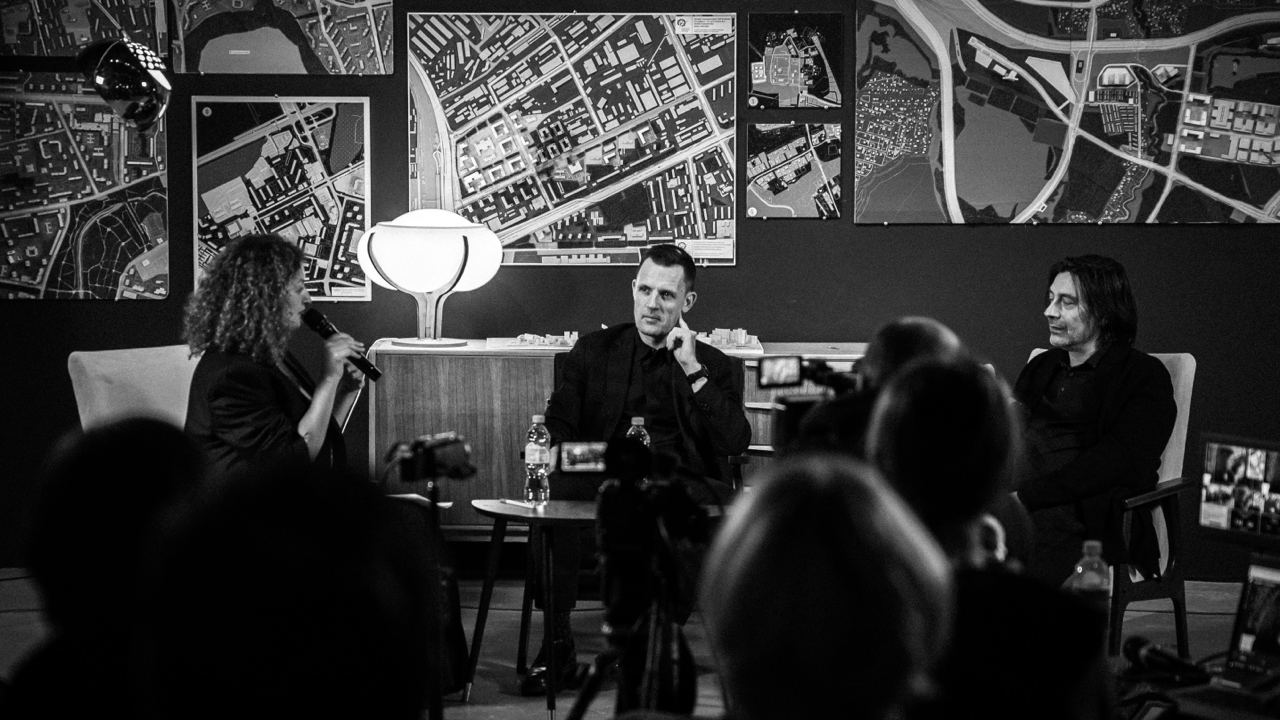Public Talk: Moscow and Its Creators — Who Designs the City
Participants:
Sergey Kuznetsov — Chief Architect of Moscow
Dmitry Likin — Architect, Co-founder of Wowhaus Bureau, Chief Artist of the First Channel
Anna Trapkova — General Director of the Museum of Moscow (moderator)
Time and again, I’ve observed people outside the architectural field, attending professional arch-events and listening spellbound to the speakers. This is no coincidence. The process of creating architecture encompasses technical, artistic, social, economic, and political aspects. Each project is unique and presents new challenges that shape the architecture. The constant work in such conditions hones the authors' approach. Take, for example, when the Chief Architect of Moscow, Sergey Kuznetsov, presents with Dmitry Likin, co-founder of Wowhaus Bureau, at a public talk.
I once received an answer to a question I hadn’t asked during such a presentation. While traveling to the office along Malyy Tolmachevsky Lane, I’ve been observing the assembly of the new Tretyakov Gallery building. Recently, the scaffolding was removed, revealing its monumental contours. Across from it, crews have been passionately reconstructing a historical building — not the Winter Palace, but a solid example of Baroque. These two facades, mere steps apart, represent different eras. On one side, a modern brick vent facade with massive window panels; on the other, handcrafted moldings over real bricks. It’s a proper contrast, and I like the idea and image of the Tretyakov Gallery. But there’s a sense of imitation from the plastic on the facade, especially when compared to the reconstruction of cornices and moldings on the building opposite. The problematics are clear, now about the theses I heard at the public talk, which might provide some thoughts and formulate an answer.
PS Special thanks to the speakers for their humor and irony. As one of our readers says: "a delight for the ears." And to Anna for guidance in moderating.)
Participants:
Sergey Kuznetsov — Chief Architect of Moscow
Dmitry Likin — Architect, Co-founder of Wowhaus Bureau, Chief Artist of the First Channel
Anna Trapkova — General Director of the Museum of Moscow (moderator)
Time and again, I’ve observed people outside the architectural field, attending professional arch-events and listening spellbound to the speakers. This is no coincidence. The process of creating architecture encompasses technical, artistic, social, economic, and political aspects. Each project is unique and presents new challenges that shape the architecture. The constant work in such conditions hones the authors' approach. Take, for example, when the Chief Architect of Moscow, Sergey Kuznetsov, presents with Dmitry Likin, co-founder of Wowhaus Bureau, at a public talk.
I once received an answer to a question I hadn’t asked during such a presentation. While traveling to the office along Malyy Tolmachevsky Lane, I’ve been observing the assembly of the new Tretyakov Gallery building. Recently, the scaffolding was removed, revealing its monumental contours. Across from it, crews have been passionately reconstructing a historical building — not the Winter Palace, but a solid example of Baroque. These two facades, mere steps apart, represent different eras. On one side, a modern brick vent facade with massive window panels; on the other, handcrafted moldings over real bricks. It’s a proper contrast, and I like the idea and image of the Tretyakov Gallery. But there’s a sense of imitation from the plastic on the facade, especially when compared to the reconstruction of cornices and moldings on the building opposite. The problematics are clear, now about the theses I heard at the public talk, which might provide some thoughts and formulate an answer.
- Speed
- Rationalism
- Heritage
- Culture of Conflict (as a distinctive feature
- Scale of Issues
- Innovation and Lost Technologies
PS Special thanks to the speakers for their humor and irony. As one of our readers says: "a delight for the ears." And to Anna for guidance in moderating.)


